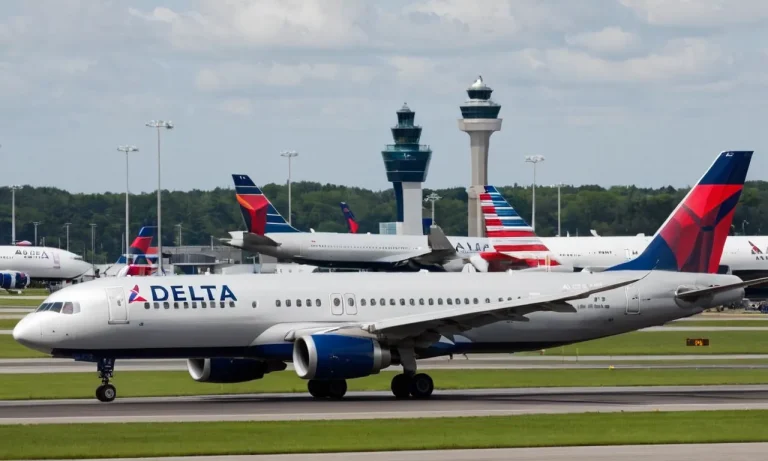Ridesharing services like Uber and Lyft have disrupted the transportation industry, providing travelers with more options than ever before. But with so many choices now available, how do you know which is the best for your needs?
In this comprehensive guide, we’ll examine the key differences between Uber, Lyft, and traditional taxi services to help you determine the ideal transportation provider.
If you’re short on time, here’s the quick answer: Uber and Lyft offer greater convenience through their apps and dynamic pricing models, while taxis provide regulated fares and door-to-door service.
Consider factors like cost, availability, and amenities to choose the best option for each ride.
Cost Comparison
Uber Fare Estimates
When it comes to comparing the cost of ridesharing services like Uber, it’s important to consider a few factors. Uber uses a dynamic pricing model, which means that fares can fluctuate based on demand and other variables.
However, Uber provides fare estimates before you confirm your ride, giving you an idea of how much you can expect to pay.
These estimates take into account factors such as distance, time, and surge pricing.
It’s worth noting that Uber offers different ride options, such as UberX, UberXL, and Uber Black, each with varying price points.
UberX is typically the most affordable option, while Uber Black offers a more luxurious experience at a higher cost.
This allows riders to choose the option that best fits their budget and needs.
Lyft Fare Estimates
Similar to Uber, Lyft also provides fare estimates to give riders an idea of how much they can expect to pay for their trip.
Lyft takes into account factors such as distance, time, and Prime Time pricing, which is their version of surge pricing.
Lyft offers different ride options as well, including Lyft Standard, Lyft XL, and Lyft Lux, each with its own pricing structure.
Lyft Standard is the most economical choice, while Lyft Lux offers a premium experience at a higher cost.
With these options, riders have the flexibility to choose the one that suits their budget and preferences.
It’s important to note that fare estimates provided by both Uber and Lyft are subject to change based on various factors, so the final fare may differ from the estimate.
Taxi Fare Regulations
Taxi fares are typically regulated by local governments, ensuring that passengers are charged a fair and consistent rate.
These regulations vary from city to city, so it’s a good idea to familiarize yourself with the specific regulations in your area.
Taxi fares are generally calculated based on distance traveled and time spent in the cab. Some cities have additional fees or surcharges, such as airport fees or late-night charges.
Taxi meters are used to accurately calculate the fare, providing transparency for both the driver and the passenger.
If you’re interested in knowing the taxi fare regulations in your city, you can visit your local government’s transportation department website for more information.
Convenience and Availability
Uber Driver Network
When it comes to convenience and availability, Uber has built a massive driver network that spans across cities worldwide.
With thousands of Uber drivers on the road at any given time, it’s usually easy to find a ride within a matter of minutes.
Whether you’re in a bustling city or a suburban area, Uber’s extensive driver network ensures that you can get a ride whenever and wherever you need it.
Lyft Driver Network
Similarly, Lyft also boasts a large driver network that provides convenient and accessible rides to passengers.
While not as extensive as Uber’s network, Lyft still has a significant presence in major cities and suburban areas.
With a growing number of drivers joining the platform, Lyft offers a reliable alternative for those seeking a ride.
Hailing a Taxi
While rideshare options like Uber and Lyft have dominated the transportation industry, traditional taxis still remain a viable option in many cities. Hailing a taxi can be convenient, especially in areas where rideshare services may be less prevalent.
Taxis can be found at designated stands or hailed on the street, and in some cities, there are even apps that allow you to book a taxi just like you would with a rideshare service.
However, it’s important to note that taxis may not always be as readily available as Uber or Lyft, especially during peak times or in less populated areas.

Amenities and Features
Uber Features
Uber offers a wide range of features and amenities to enhance your ride experience. One of the standout features of Uber is the ability to choose from various vehicle options, such as UberX, UberXL, Uber Black, and Uber SUV.
Whether you’re traveling alone or with a group, there is a suitable option for everyone.
Additionally, Uber provides a cashless payment system, allowing you to conveniently pay for your ride through the app.
This eliminates the need for physical cash and makes the payment process quick and hassle-free.
Lyft Features
Similar to Uber, Lyft also offers a variety of features and amenities to cater to different needs. Lyft provides options like Lyft Standard, Lyft XL, and Lyft Lux, which offer different vehicle sizes and luxury levels.
One unique feature of Lyft is the ability to tip your driver through the app, allowing you to show your appreciation for excellent service.
Furthermore, Lyft offers a feature called “Shared Rides,” which allows you to share your ride with other passengers heading in the same direction, reducing the cost and making the ride more affordable.
Taxi Features and Amenities
Taxis have long been a traditional transportation option, and they also come with their own set of features and amenities.
Taxis are easily available in most cities, and you can hail one from the street or find them at designated taxi stands.
Taxis typically accept both cash and card payments, providing flexibility for passengers.
One advantage of taking a taxi is the presence of professional and experienced drivers who are familiar with the city’s roads.
They can offer local insights and recommendations to enhance your journey.
When it comes to amenities, both Uber and Lyft often offer a more modern and comfortable experience compared to traditional taxis.
Many Uber and Lyft vehicles are equipped with amenities such as phone chargers, music streaming services, and even water bottles for passengers’ convenience.
However, it’s worth noting that these amenities may vary depending on the vehicle option and availability.
Safety and Accountability
When it comes to choosing a rideshare option, safety and accountability are top priorities for many passengers. Here’s a breakdown of the safety policies and measures taken by Uber, Lyft, and traditional taxis.
Uber Safety Policies
Uber has implemented several safety features to ensure the well-being of its passengers. One of these is the driver background check, which includes a criminal record check and a review of driving history.
Additionally, Uber provides 24/7 customer support and has a dedicated team that handles safety-related concerns.
They also have a feature called “Share My Trip” that allows passengers to share their ride details with friends or family, adding an extra layer of security.
Lyft Safety Policies
Lyft also prioritizes safety and has similar safety measures in place. Like Uber, they conduct comprehensive background checks on all drivers and regularly monitor their driving records
. Lyft also provides a 24/7 support team for any safety-related concerns.
They have a feature called “Emergency Assistance” that allows passengers to contact emergency services directly through the app.
To learn more about Lyft’s safety policies, you can visit their website at https://www.lyft.com/safety.
Taxi Driver Screenings and Oversight
Traditional taxi services have their own set of safety protocols. Taxi drivers are typically required to undergo a background check, including criminal record checks and driving history reviews.
They are also subject to regular inspections of their vehicles to ensure they meet safety standards.
Many cities have local taxi commissions or regulatory bodies that oversee the operations of taxi companies, adding an extra layer of accountability.
However, it’s important to note that the level of oversight may vary depending on the city or region.
Conclusion
When choosing between Uber, Lyft, and a traditional taxi, consider factors like cost, availability, amenities, and safety based on your specific transportation needs.
Uber and Lyft offer greater convenience through their apps, while taxis provide door-to-door rides with regulated fares.
Weigh the pros and cons of each to determine the best option for you.






